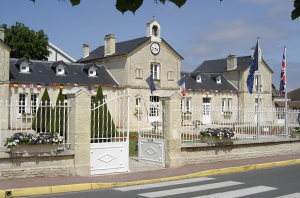The Battle of Normandy: Airborne Assault
Not long before midnight on 5 june 1944, more than 1,200 aircraft took to the skies above southern England. They carried Horsa gliders towed by Halif, three divisions of Allied airborne troops and pathfinders, bound for Normandy.
While two American divisions made for the Cotentin peninsula to the West, the British 6th Airborne Division headed east of the River Orne to secure the left flank of the Allied landings. The men of D Company of the 2nd Battalion, Oxfordshire and Buckinghamshire Light Infantry, were the first Allied troops to set foot in Normandy.
Carried in six wooden Horsa gliders towed by Halifax bombers, their task was to secure the bridges over the River Orne and the Caen canal before they could be demolished. At 5,000 feet, the tow lines were cast off, the men stopped singing, and the gliders descended in silence.
One landed within 50 feet of a pillbox guarding the bridges.
Within moments it had been neutralised and the bridges secured, after a short firefight with stunned German defenders.
Parachute troops were soon landing all across the area to the east of Ranville. ln darkness and strong winds, many found themselves outside of their planned landing zones.
The German battery at Merville was the target of 9th Battalion, the Parachute Regiment. Fewer than I60 of its 600 men reached their rendezvous point, and they suffered 75 casualties while assaulting and destroying German guns. Other units, including 3rd Parachute Squadron of the Royal Engineers and the 1st Canadian Parachute Battalion, destroyed the bridges over the River Dives to the east, to block German reinforcements. The troops of the 6th Airborne Division then defended their positions against German counter-attacks and cleared landing zones for more waves of gliders carrying reinforcements, equipment and vehicles. Many of those laid to rest here were among the first Allied servicemen to lose their lives in Normandy: more than 200 on 6 june.
Over the following days, fierce fighting took place around Bréville-Ies-Monts, a crucial strategic position still held by German forces. On the night of 12-13 june, 6th Airborne Division captured the village with heavy casualties, and some 200 of those killed in this action were buried in the war cemetery of Ranville. Once the bridgehead was secure, Allied forces pushed inland towards Caen.



